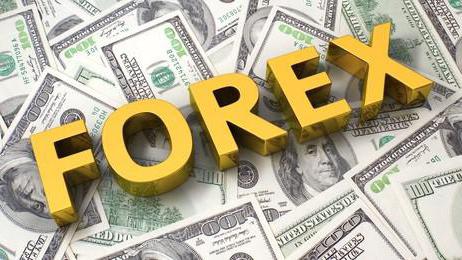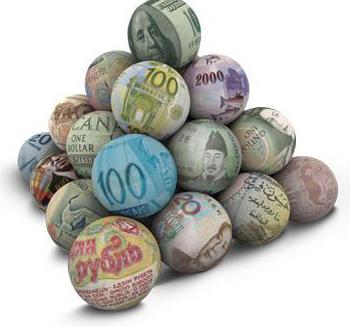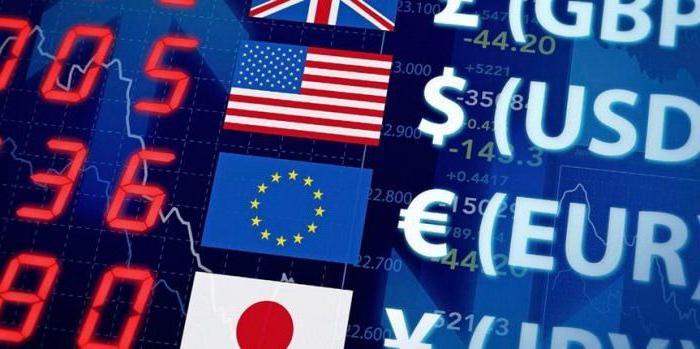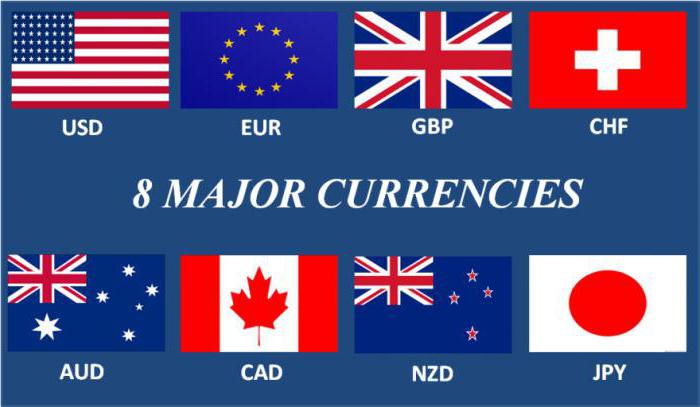Forex currency pair is a structure of quotes and pricing of currencies traded on the market. The currency value is a rate and is determined by comparison with another unit.
The first registered currency in a pair is called the base currency, and the second - the quotation unit. The currency pair indicates how much of the face value of the quote is necessary to purchase one conventional base unit.

All Forex transactions involve the simultaneous purchase of one currency and the sale of the second, while the currency pair is considered as a single instrument that can be bought or sold. If you purchase such a pair, you buy the base currency and implicitly sell the quoted one. The bid (purchase price) is part of the quote currency that you need to buy one conventional unit of the base. Conversely, when you sell a currency pair, you alienate the base unit and get the quote currency. The request (selling price) for this pair is the amount that you will receive in the quote currency for the sale of one base unit.
For example, if the pair USD / EUR is indicated as the formula USD / EUR = 1.5, and at the same time you make a purchase, this means that for every 1.5 euros you sell, you receive (complete the purchase) one dollar. If you sell such a pair at Forex, you will have one and a half euros for every dollar you sell. The foreign currency quotation looks like EUR / USD, and its value will be EUR / USD = 0.667. This means that you will receive 66.7 cents in US currency for 1 euro sold.

The main currency pairs on the "Forex"
There are as many currency pairs as there are monetary units in the world. All of them are classified according to the volume that is traded daily. Currencies that are sold and bought very often in relation to the US dollar are called the main. These include USD / JPY, EUR / USD, GBP / USD, USD / CAD, AUD / USD, as well as USD / CHF. All the forex currency pairs mentioned above have very liquid markets that trade 24 hours a day every business day, moreover, they have very narrow spreads.
What are the most popular currency pairs?
Of the entire list of major currency pairs, it is EUR / USD that is considered the most popular. She has the highest transaction volume. According to feedback from Forex market participants, more than 70% of global trading is focused on EUR / USD. However, this does not mean that 70% of all traders trade only in euro and dollar.
Markets are not limited to what retail participants do. In fact, traders are a very small part of Forex. Large transactions are made by large market participants such as central banks. Sometimes they do this not for profit, but only by virtue of their obligations. There are often situations when a country has to sell its currency against another in order to reduce or control its value.
One of the most popular pairs among retail traders is GBP / JPY and EUR / JPY, with GBP / USD being used a little less widely. Moreover, the first is the most used, because it is most variable. Trading these units is quite risky, especially when they are sold over a shorter time frame. The reason is that these are the most volatile currency pairs on the Forex. Their trading signals are sharp and powerful, they have a wide scale of movement. Daily traders trade GBP / JPY to get more profit, but such trading has mixed reviews because your losses can be serious.

Minor units
Currency pairs not related to the US dollar are called insignificant or secondary. These pairs have a wider spread; they are not as liquid as the main ones, but they are quite widespread. Cross-currency combinations that trade the largest volume contain one main currency. Some examples of such quotes include EUR / GBP, GBP / JPY and EUR / CHF (these are the calmest currency pairs on Forex).
Exotic pairs include currencies in emerging markets. They are not too liquid, and their spreads are much wider. An example of an exotic currency pair is USD / SGD (US dollar / Singapore dollar).
Exotic currency pairs
In addition to the above, USD / SEK (Swedish krona), USD / DKK (Danish krone) and USD / NOK (Norwegian krone) are the most famous exotic currency pairs. Forex forecast for them is most predictable, and transactions are easy to plan. If you are trading one of them for the first time, you may encounter difficulties when calculating a stop loss and making a profit. Stop loss, which should be placed above the previous candlestick, has several hundred pips values. But that should not scare you. These pips are not similar to those that you see in other currency pairs. Specialists call them mini-pips, they are about 1/10 of the value of ordinary points.

This is not a complete list of Forex currency pairs with which you can conduct profitable trading. With the right strategy you can use units of any country.
What are the most liquid couples in the world?
EUR / USD is the most liquid currency pair because it has the highest trading volume. However, you will not have problems with other units, since Forex is huge. It is not like the stock market, where it is difficult to find a buyer for the shares you have acquired that you now want to sell.
Of course, there are two types of brokers. Liquidity can be a problem for true ECN or STP brokers. Other types of companies sometimes pretend to have liquidity problems. In fact, they do not send your transactions to any banks, expecting more favorable conditions.

Buying and selling Forex currency pairs
The exchange rate reports the price at which the currency of one country can be exchanged for a unit of another. For example, the most frequently traded currency pair consists of the euro and the US dollar. It is always indicated as EUR / USD and is never written in reverse order.
Currency pair anatomy
The description of currency pairs at Forex can be presented as follows. The first currency indicated in the pair is called the base currency, the second - the quote or counter currency. When publishing with the exchange rate, it is indicated how much of the quote currency is required to purchase the base unit. For example, EUR / USD = 1.5467. This means that for one euro you can purchase $ 1.5467.

When selling a currency pair, the exchange rate displays how many units of the quote currency you will receive when selling the base unit. By applying these strict standards for dealing with currency pairs, traders can more easily maintain exchange rates and clearly understand their values.
When trading currency derivatives, you do not trade the base, but make transactions with derivatives of this market.
Currency Rates and Spreads
Each Forex currency pair indicated by your broker is accompanied by an exchange rate that shows the price.
The bid price is the rate that your broker is willing to pay for a currency pair. In other words, this is the rate that you get when selling in the market.
The request price is the rate at which your broker is ready to sell the unit, that is, exactly the value that you must pay in order to buy a currency pair.
The officially quoted rate is the spot price. However, in the Forex market, units are offered for sale at a placement price (order), and traders who want to buy a position tend to do this at an offer price that is always lower or equal to the asking price. This price differential is called a "spread." For example, when the EUR / USD quote is 1.3607 / 1.3609, the spread is equal to 0.0002 US dollars or 2 points. High liquidity markets show lower spreads than lower-selling markets.

The spread offered to the sole trader with an account with a brokerage firm, and not to large international Forex market participants, is more important and varies between brokerage companies. Brokers usually increase the value that they receive from their market providers as compensation for their service to the end customer, rather than charging a transaction fee.
Trading Positions
Long and short positions are only those terms that traders use in trading, they are not related to the length of anything. These are just conditions. Of course, usually market participants prefer to trade "longer" when the price rises, and "shorter" when it decreases. This is due to simple human emotions. In the event of an increase in value, the Forex player is governed by a desire to get more profit, and when it falls, a feeling of fear of losing his money. Since the fear for your capital is higher than the desire to increase it, the price drops much faster compared to how it grows. For this reason, when you buy any currency, a long trading position opens, because it may take longer to increase the value. And when you sell, the trading position is shorter, as it may take you less time to lower the price.
What does it look like in practice?
As an illustrative example, you can parse the EUR / USD pair, traded at a quote of 1.33.
In the above case, one who buys 1 EUR will have to pay 1.33 US dollars. Conversely, a seller of 1 euro will receive 1.33 USD (provided there is no difference in exchange rates). Traders buy EUR / USD if they believe that the euro will rise in value against the US dollar. This path is called the long position in pairs. On the contrary, the sale of EUR / USD, called the short position, will be carried out if it is expected that the value of the euro will fall against the dollar. A pair is depicted in only one way, its display does not change during trading. In this case, the buy or sell function is used at the beginning of bidding. It is profitable for a trader to buy if bull trends are observed in the first position, and sell if a bear trend begins ahead.
The cost of an offer is always less than the price, because brokers pay less than they get for the same currency pair. The difference, known as spread, is an indicator of how your broker generates a significant portion of his profit.
For example, the rate is 1.4745 USD for each euro, while the request is 1.4746 USD for each EUR. The bid price is always indicated before the request, and since the difference between the two costs is quite small, brokers usually display only the last two digits when indicating the price of the request.








